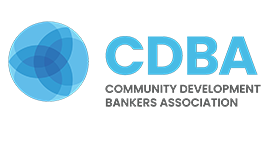July 30, 2020 Financial Health Network Webinar: Guide to Small Business Financial Health
On the July 30th webinar, Laura Cummings of the Financial Health Network (FHN) discussed FHN's Guide to Measuring Small Business Financial Health.
You can view Laura's presentation slides here.
Synopsis of the Financial Health Network's "A Guide to Measuring Small Business Financial Health":
This guide is designed to help financial services providers assess the financial health of their current and prospective small business customers. In the guide, we include nine indicators of small business financial health with two measurement methods (survey data or observed data), as well as corresponding survey questions and suggested data points. The purpose of measurement is to help providers better understand customer needs so they can develop and offer products, services, and solutions that improve small business financial health. With greater investment in small business financial health, these businesses will be better positioned to achieve positive outcomes that will ultimately benefit their owners, employees, and communities.
Providers can measure or assess the financial health of small businesses in two primary ways: by sending small business owners a survey to complete, or by using financial data that a provider already collects through normal business operations. Small business financial health measurement is not the same as underwriting or calculating the ability to repay a loan, though these processes collect some of the data that providers could also use to assess or monitor financial health.
List of Small Business Financial Health Metrics and Corresponding Financial Data Sources
1. Meets Financial Obligations: Overdraft fees, tax liens, late fees
2. Maintains Sufficient Cash Reserves: Cash buffer days
3. Maintains a Comprehensive Financial Management System: separate business and personal accounts
4. Plans for Significant Business Risks: Business plan or TA for business plan
5. Plans for Cash Flow Variability: Has cash flow budget or financial projections
6. Has Appropriate Insurance: proof of insurance for relevant industry, payment to insurance carriers
7. Has Access to Affordable, Timely Credit: Business owner’s credit score, capacity of existing lines of credit
8. Has a Sustainable Debt Load: debt-to-equity ratio, debt service coverage ratio
9. Has Access to Investment Capital: Business’s credit score, Retained earnings
